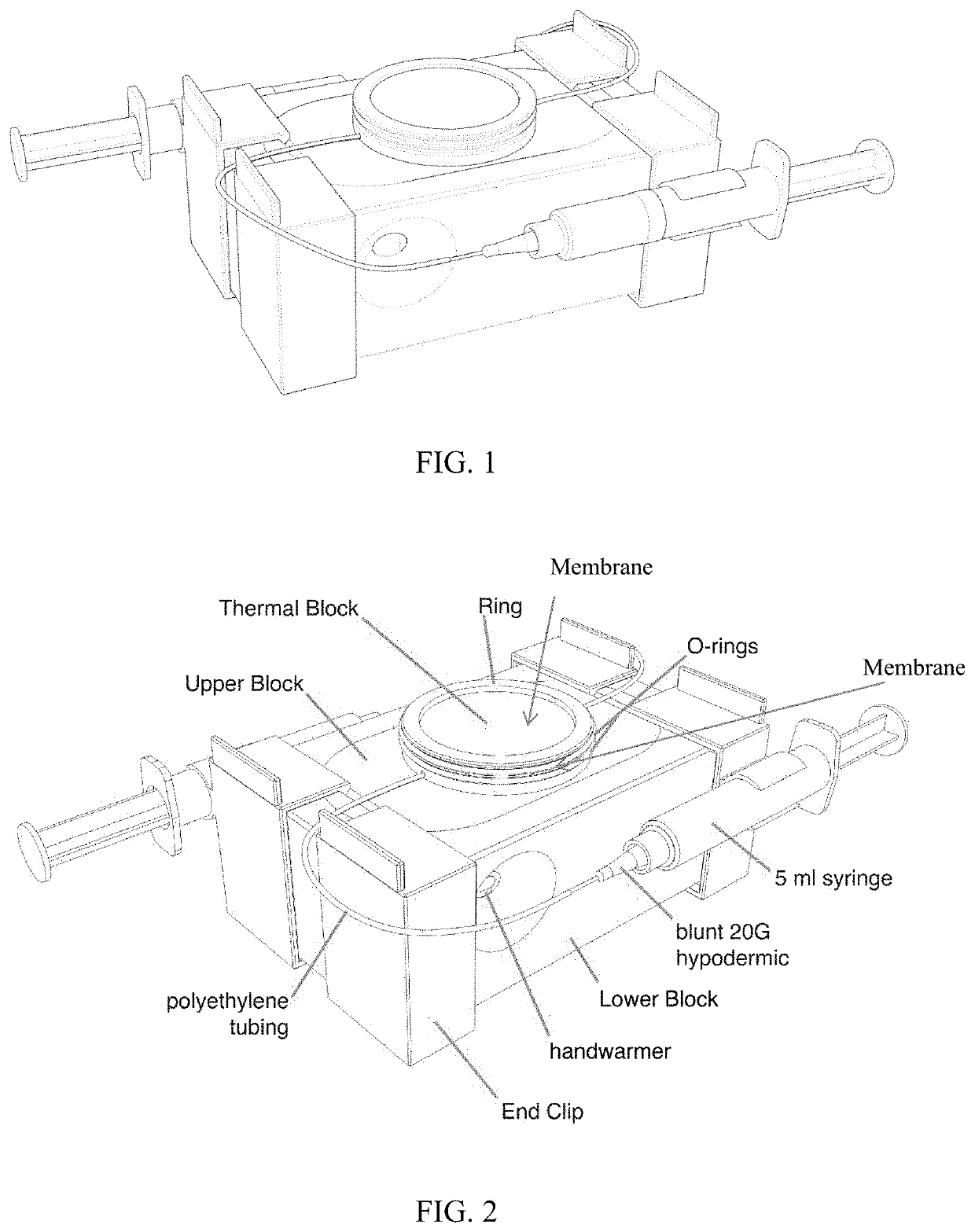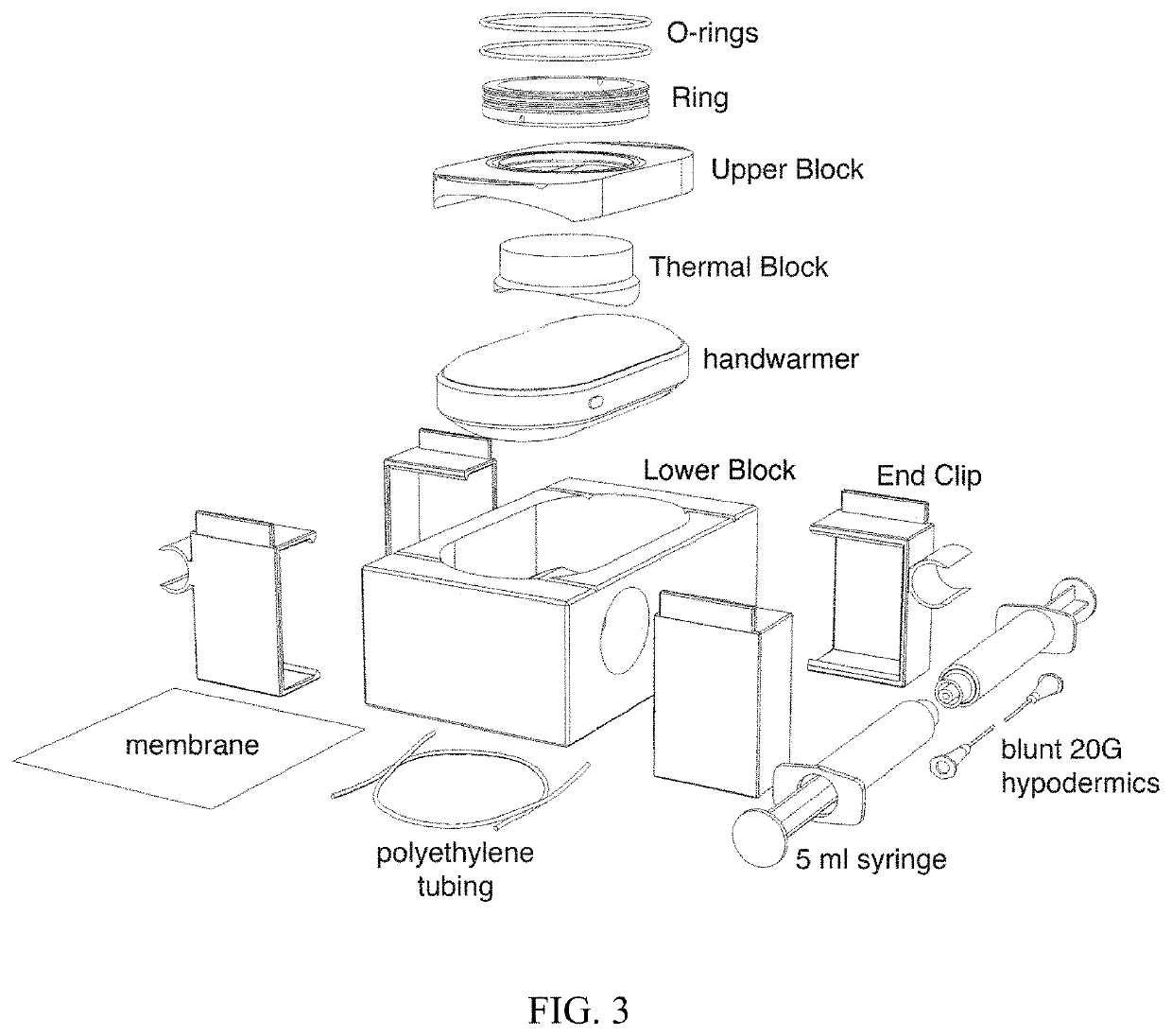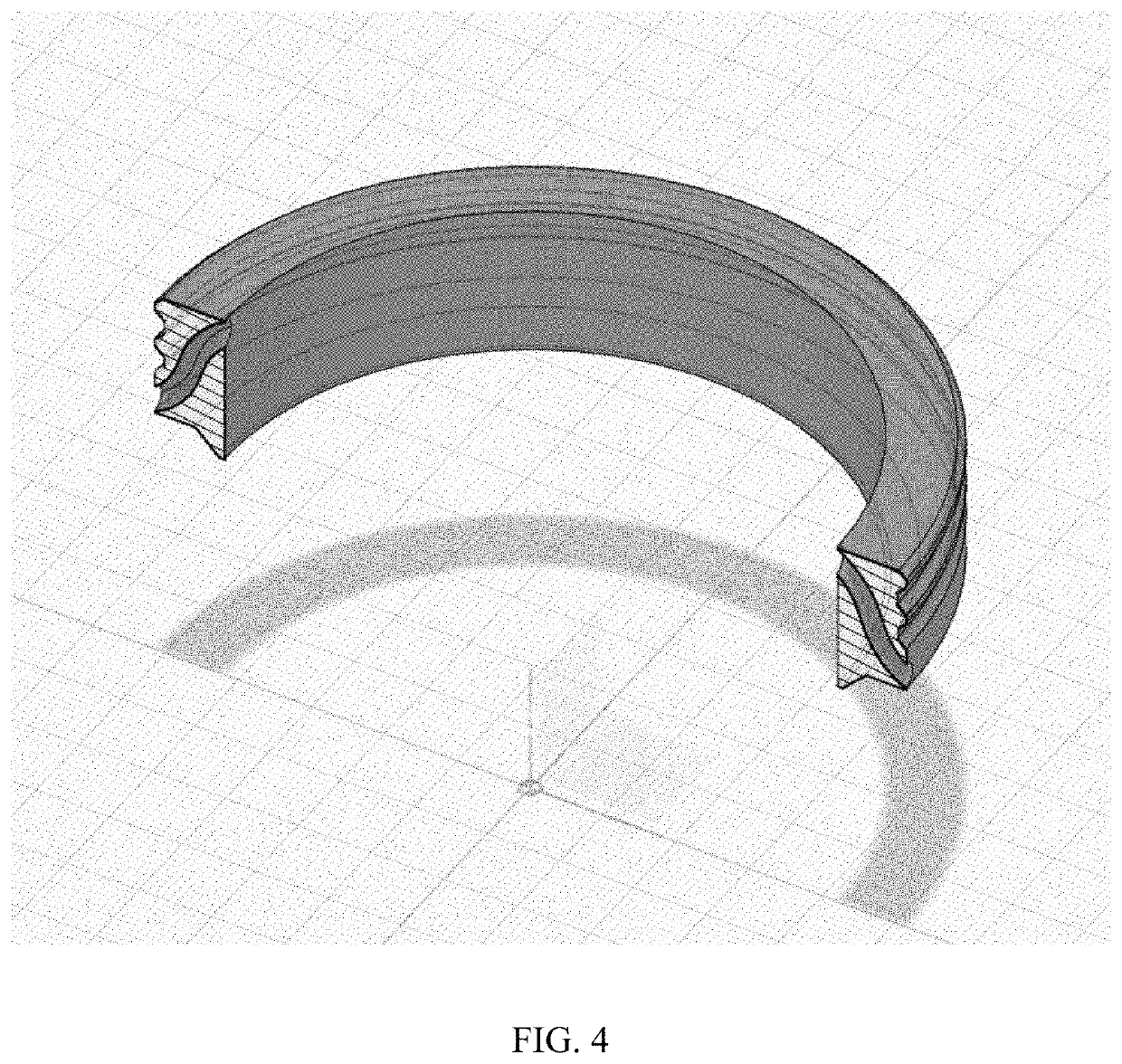Blood-feeding systems and methods for hematophagous arthropods
a technology for hematophagous arthropods and blood feeding systems, which is applied in the field of blood feeding systems and methods for hematophagous arthropods, can solve the problems of not maintaining temperature and being portable, and achieve the effects of reliable and inexpensive blood feeding systems, thermal stability, and low cos
- Summary
- Abstract
- Description
- Claims
- Application Information
AI Technical Summary
Benefits of technology
Problems solved by technology
Method used
Image
Examples
example 1
[0052]The Pheeder was tested against a blown-glass feeder heated with water. The day before the trial, 15-day-old female Aedes aegypti mosquitoes of the Orlando strain were placed in cages (BugDorm™), 50 to a cage, with deionized water available to drink, but no sucrose. Three feeder setups were compared. Feeder 1 was a blown-glass feeder, warmed with pumped water at 36.5° C., with a membrane of Parafilm-M. Feeder 2 was a Pheeder set to the lowest heat setting, also with a membrane of Parafilm-M. Feeder 3 was a Pheeder set to the lowest heat setting, with a water-soaked collagen membrane (LEM Products™ Fresh Clear Edible Collagen Casing). While the feeders warmed up, each feeder was fit with its membrane and filled with 3 ml of defibrinated sheep's blood, spiked with adenosine triphosphate (ATP). No carbon dioxide (CO2) supplement was used to stimulate feeding. The cages were placed on their sides so the top surface was screened, and feeders were placed in the inverted position on t...
PUM
 Login to View More
Login to View More Abstract
Description
Claims
Application Information
 Login to View More
Login to View More - R&D
- Intellectual Property
- Life Sciences
- Materials
- Tech Scout
- Unparalleled Data Quality
- Higher Quality Content
- 60% Fewer Hallucinations
Browse by: Latest US Patents, China's latest patents, Technical Efficacy Thesaurus, Application Domain, Technology Topic, Popular Technical Reports.
© 2025 PatSnap. All rights reserved.Legal|Privacy policy|Modern Slavery Act Transparency Statement|Sitemap|About US| Contact US: help@patsnap.com



